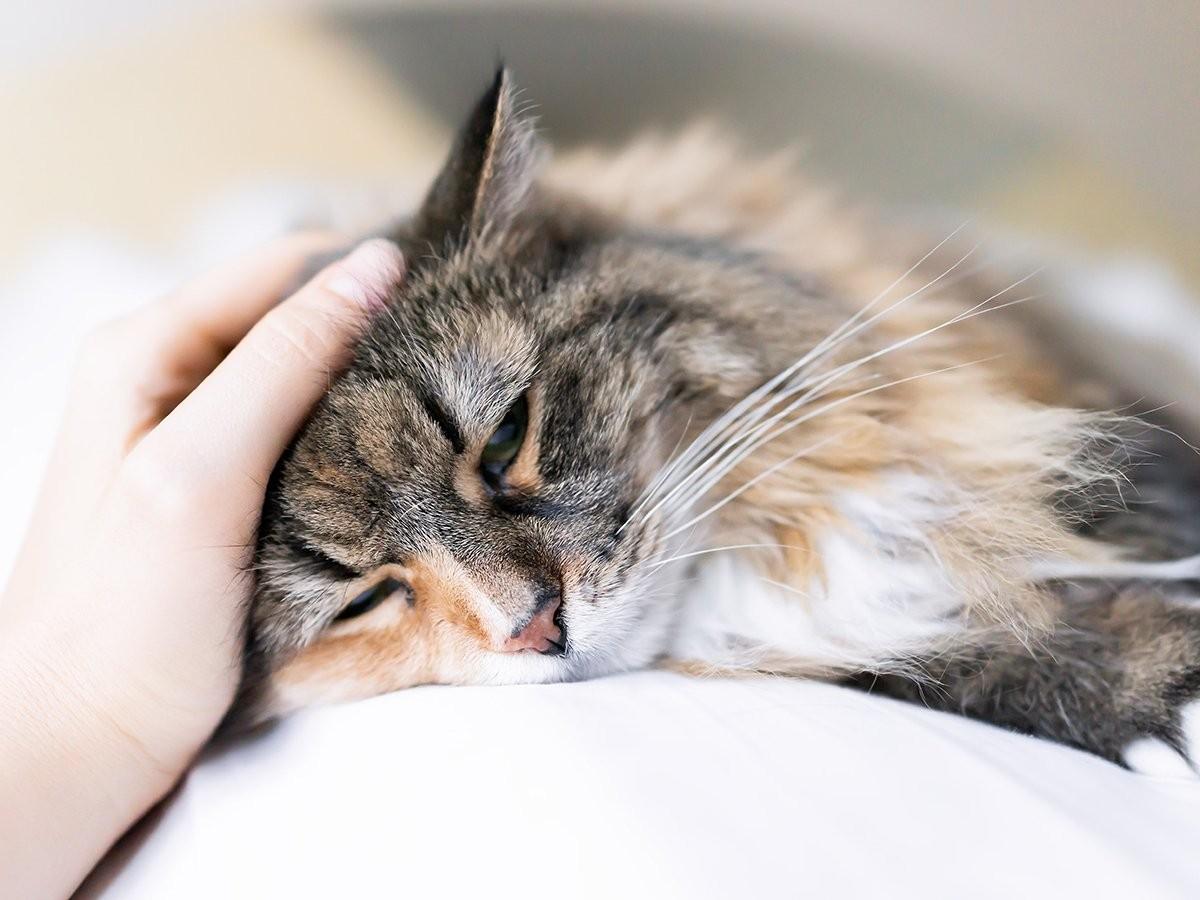Has your feline friend been feeling under the weather? Just like humans, cats can develop fevers as a response to various underlying conditions. While a mild fever can be a normal part of their immune response, a high or prolonged fever can indicate a more serious health issue. This comprehensive guide will help you understand the causes, symptoms, and treatment options for fever in cats, empowering you to provide the best care for your furry companion.
What is a Fever in Cats?
A fever is a temporary increase in body temperature, often a sign that your cat's immune system is fighting off an infection or illness. Normal body temperature for cats ranges from 100.4ºF to 102.5ºF (38°C to 39.2°C). If your cat's temperature exceeds 102.5ºF, they are considered to have a fever.
How to Check a Cat's Temperature
The only accurate way to determine if your cat has a fever is by taking their temperature rectally with a digital thermometer. Lubricate the tip of the thermometer with petroleum jelly and gently insert it about an inch into your cat's rectum. Hold it in place for a minute or until the thermometer beeps.
Signs of Fever in Cats
Cats with a fever may exhibit a variety of symptoms, including:
If your cat displays any of these signs, it's important to monitor them closely and consult your veterinarian if the fever persists or worsens.
Causes of Fever in Cats
A fever in cats can be caused by a wide range of underlying conditions, including:
Infections
Bacterial Infections: These can occur anywhere in the body, such as the urinary tract, respiratory system, or skin.
Viral Infections: Common viral infections in cats include upper respiratory infections, feline leukemia virus (FeLV), and feline immunodeficiency virus (FIV).
Fungal Infections: Fungal infections can affect the skin, respiratory system, or internal organs.
Injuries and Trauma
Abscesses: Localized infections that form pockets of pus.
Bite wounds: Can introduce bacteria into the body, leading to infection and fever.
Internal injuries: Trauma to internal organs can trigger an inflammatory response and fever.
Other Causes
Immune-mediated diseases: These occur when the immune system mistakenly attacks the body's own tissues.
Cancer: Certain types of cancer can cause fever in cats.
Toxins or medications: Ingesting toxic substances or certain medications can trigger a fever.
When Should You Worry About Cat Fever?
A mild fever that resolves within a day or two may not be a cause for concern. However, if your cat's fever persists for more than 24 hours, is higher than 104°F, or is accompanied by other concerning symptoms, seek veterinary attention immediately.
Treatment for Fever in Cats
The treatment for fever in cats depends on the underlying cause. Your veterinarian will perform a thorough examination and may recommend diagnostic tests like bloodwork to determine the root of the problem. Treatment options may include antibiotics for bacterial infections, antiviral medications for viral infections, or other medications to address specific underlying conditions.
In some cases, your veterinarian may recommend supportive care at home, such as:
Providing a cool, quiet place for your cat to rest.
Ensuring access to fresh water.
Offering small, frequent meals of easily digestible food.
Using a cool compress on their paws or ears.
FAQs About Feline Fevers
How can I tell if my cat has a fever? The most reliable way to check for a fever is by taking your cat's temperature rectally. You may also notice symptoms like lethargy, loss of appetite, or warm ears.
What is a normal temperature for a cat? A normal temperature for a cat ranges from 100.4ºF to 102.5ºF (38°C to 39.2°C).
What should I do if my cat has a fever? If your cat has a mild fever, monitor them closely and offer supportive care. If the fever persists or worsens, or if your cat is showing other concerning symptoms, consult your veterinarian.
What can I give my cat for a fever? Never give your cat any human medication without consulting your veterinarian first. Many over-the-counter medications, such as acetaminophen or ibuprofen, are toxic to cats.
Can I give my cat human fever medication? No, human fever medications like acetaminophen and ibuprofen can be highly toxic and even fatal to cats.
Expert Insights From Spot
Spot Pet Insurance data highlights the prevalence of certain conditions associated with fever in cats. Periodontal disease, for instance, led to 8,202 pet insurance claims with an average treatment cost of $1,056.64. Hypertrophic cardiomyopathy, another potential cause of fever, resulted in 242 claims with an average treatment cost of $852.55. Parasites, which can also trigger fever, led to 4,935 claims with an average treatment cost of $227.30. Additionally, unspecified growths or cancer, a less common but serious cause of fever, led to 1,908 claims with an average treatment cost of $640.92.
Key Takeaways
Fever in cats can be a sign of various underlying conditions, ranging from mild infections to more serious illnesses. By being aware of the signs, understanding the causes, and knowing when to seek veterinary care, you can help your cat recover quickly and stay healthy. Remember, early detection and treatment are key to ensuring the best outcome for your feline companion.

With 10 years of experience as a pet parent, I aim to empower pet owners with insights into pet insurance and maintaining their pet's well-being. I aspire to be a trusted source, combining knowledge with a commitment to the welfare of our beloved pets.












